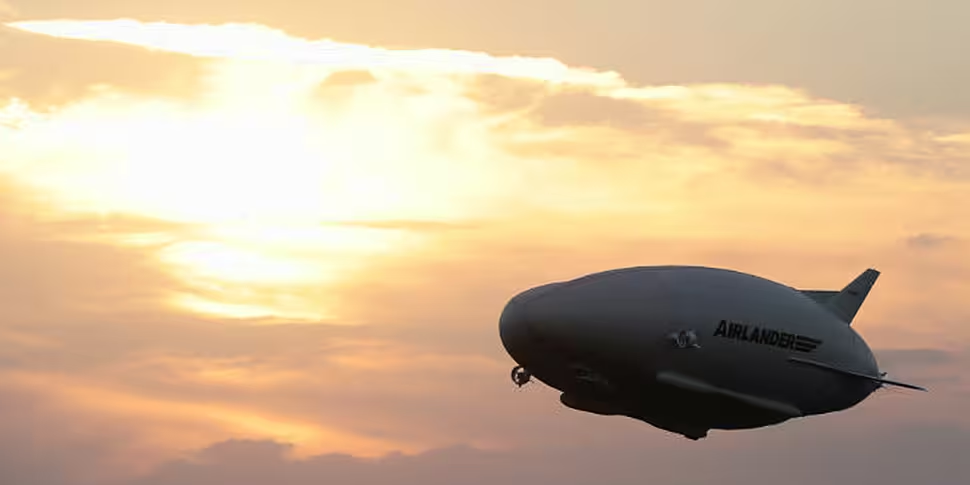The world's largest aircraft has taken to the skies over the UK for its successful maiden voyage.
Photographers and plane spotters waited patiently in baking heat for the first flight of the 302ft-long (92m) Airlander 10 since it was revamped by a British company.
Crowds cheered as the airship - nicknamed "the flying bum" because of its bulbous exterior - loomed overhead at Cardington airfield in Bedfordshire on Wednesday evening.
It performed one lap of the airfield - using engines that seemed much quieter than a plane or helicopter - before landing about half an hour later.
Donna Seymour, 50, said: "It was beautiful. It's just so unusual.
"I think it's quite appropriate," she joked, when asked what she thought of the aircraft's nickname.
Hybrid Air Vehicles (HAC) has made hundreds of changes since taking over development of the aircraft, which was conceived to be used in long-endurance surveillance for the US government before it fell foul of defence cuts.
HAV chief executive officer Stephen McGlennan said the team had been waiting for low winds for the launch but added the airship could "operate very happily" in 80 knots of wind.
He said: "Think of a big helicopter, a really giant helicopter. This can do the same thing that a helicopter can do - that's to say, provide air transportation for people and goods without the need for a runway - but this thing can take more over longer distances, it's cheaper and it's greener.
"It's a combination of an aircraft that has parts of normal fixed wing aircraft, it's got helicopter, it's got airship."
Mr McGlennan said the aircraft was "very simple" to manoeuvre and people had been practising to fly it on simulators for at least five years.
It uses helium to become airborne and can travel at a speed of 148km/h.
Wednesday's flight marks the beginning of 200 hours of test flights for the 143ft-wide (44m) and 85ft-high (26m) craft, which will be able to stay airborne for about five days during manned flights.
HAV claims it could be used for a variety of functions such as surveillance, communications, delivering aid and even passenger travel.
It is also hoped the Airlander 50 will eventually be developed, which would be able to transport 50 tonnes of freight.









